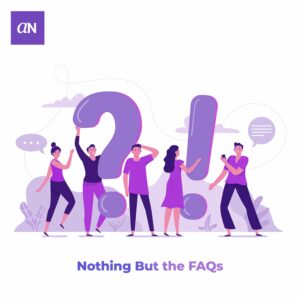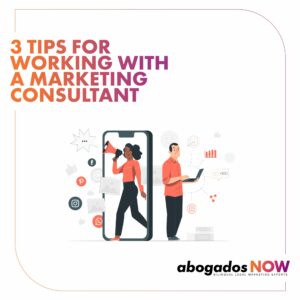Once upon a time, marketing consisted of simply announcing something to an audience. Radio ads, billboards, and commercials spoke directly to the consumers and said, “You should buy this product; here is a catchy slogan or jingle to help you remember it.”
Those days are gone.
Today, consumers expect to have a dialog with the companies and brands they are considering. Consumers can reach out to their favorite brands on social media, tag the brand accounts in their content, and align themselves with companies in more meaningful ways than they have in the past. Consumers today are savvy, and they aren’t just looking for the first option. They are looking for the best option. The question for marketers then becomes, How do I convince the marketplace that I am the best option? There are several ways to accomplish this, but a somewhat simple and effective way to do so is through a Frequently Asked Questions (FAQ) section.
A FAQ section anticipates audience questions and answers them in a colloquial and accessible way. It is a way to demonstrate that you understand your audience. Starting a FAQ section can be intimidating – below is a breakdown of the process to help you begin.
Step 1: Understanding what an FAQ section is
At its core, a FAQ section is a list of the most commonly asked questions a brand or company receives. It is presented in a question-and-answer layout to give the impression that a conversation is happening. The questions do not need to be literal questions that have come in from prospects and customers; they can be an amalgamation or a summary of some of the topics that the audience cares about.
For example, if you were running a restaurant with a fantastic happy hour, your customers may be curious about the happy hour’s details. In the FAQ section, you might have a section that reads like this:
Q: Does ABC Restaurant have a happy hour?
A: Yes! We have a daily happy hour that runs from 5-7 pm. During this time, beer is $1 off, the house wine is $1 off, and we have a small selection of specialty cocktails for $6 apiece. We also have a small bites menu. Check out the happy hour menu here: [insert link].
Your FAQ section’s tone should be consistent with the tone you use on the rest of your marketing material, but generally speaking, the FAQ section will be slightly more casual than other areas of your site.
Step 2: Finding the right questions to answer
There is an art to finding the questions your audience cares about. You do not want the questions to be too easy or too complicated. You need to strike a balance between information that your audience cannot find anywhere else and questions that apply to most of your customers. For example, don’t bother to list your company’s hours of operations in the FAQ section since your audience can likely find that on Google or the footer of your website. Similarly, do not answer super complicated questions that only apply to a small subset of your audience. Those questions can be answered one-on-one.
Here are three ways to discover good questions for your FAQ section:
- Check your competitors. If another company offers a similar service, visit their website and see how they handle their FAQ section. If you are competing for the same pool of customers, your audience will likely have the same questions as their audience does.
- Solicit them from your customers. There is nothing wrong with polling your existing clients. Just remember to keep it short and sweet. A quick poll on social media can be effective, as can a few simple questions from the representative responsible for the account.
- Play with google auto-fill. Most people google the questions they want answers to, and Google will auto-fill searches with the most commonly searched terms. Do some research by putting yourself in your audience’s shoes. Type in a few starter keywords and see what google delivers to you.
Step 3: Find the right medium for your brand.
Traditionally speaking, FAQs appear in text form on a dedicated webpage, but that isn’t the only way to display them. So long as something is a question, followed by an answer, it is a FAQ.
Here is a list of some other ways that your brand can publish FAQs:
- On video: Have the question appear on screen followed by an interview-style answer from an expert within your company.
- Through a social media series: Utilize hashtags and answer a different question every day.
- Via pop-ups: If there is a topic your audience regularly asks questions about, set up a pop-up on relevant pages that reveals the answer when your audience is likely thinking of a question. For example, suppose you are a personal injury attorney who offers free consultations. In that case, you can set up a pop-up on your homepage and consultation page that says, “Is there a fee for consultations? No. There is no risk in calling. Your first consultation is free.”
- With a search bar: Instead of publishing an overwhelming list of questions on one page, put a search bar at the top of your FAQ page and encourage your audience to type in questions or keywords. As they do, relevant results will populate so that they are only seeing the Q&As relevant to them.
FAQs can build rapport and trust with your audience, along with boosting your authority as an industry expert. Prioritize your FAQ page when you build or redesign your website, and then track the traffic to see how impactful it is. Remember that you can always experiment with layout and design until you find the best fit for your audience. Digital marketing is all about experimentation, and that applies to audience questions as much as it applies to anything else! So start playing around with FAQs today.





